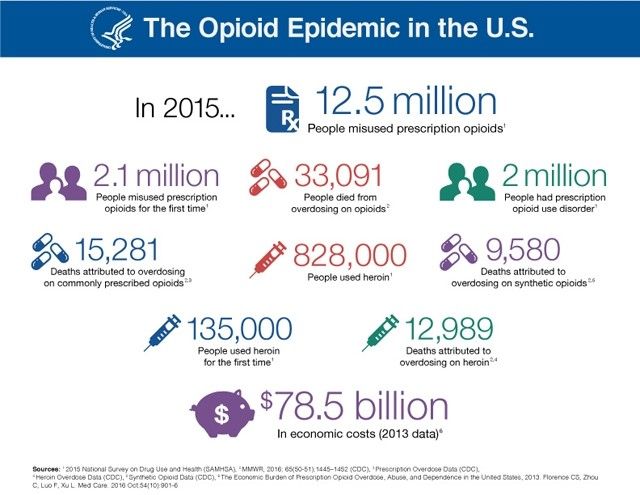It is becoming more and more apparent that the United States is in the throes of an opioid epidemic, as more than two million of Americans have become dependent on or abused prescription pain pills and other types of drugs such as heroin. The data shows that the situation is dire, and yet unbelievably, is getting worse. Until opioids are prescribed more cautiously and until effective opioid addiction treatment becomes easier to access, overdose deaths will likely remain at record high levels.
This past August President Trump said, “The opioid crisis is an emergency, and I’m saying officially right now it is an emergency. It’s a national emergency. We’re going to spend a lot of time, a lot of effort and a lot of money on the opioid crisis.”
To say it’s become a serious problem is an understatement. If you look at people who have a heroin addiction, three out of four of them started because of a prescription medication they received. Once someone has become dependent on opioids for pain relief, switching to heroin becomes a much more viable option due to the fact that you don’t need a prescription to obtain the drug and it is much cheaper. Researchers from Washington University School of Medicine in St. Louis noted in the journal JAMA Psychiatry that there are three key factors in the decision to use heroin: accessibility, including lower cost; enjoyment of the high; and the ease with which the drug could be taken. Opioids, straight from your medicine cabinet, are often now a gateway drug to other illicit and illegal drugs. It’s a widespread, very real problem and any of us at any given time are susceptible to facing an addiction ourselves.
One glance at this chart provided by the Department of Health and Human Services is extremely eye opening in realizing that this is now an epidemic of mass proportion.
While the chart above is alarming in of itself, the possible trajectory of what could happen regarding opioid related deaths in the future is downright terrifying. Unless immediate and major intervention occurs, Statnews.com projects that, “the death toll [from opioids] over the next decade could top 650,000. That’s almost as many Americans as will die from breast cancer and prostate cancer during that time period. Put another way, opioids could kill nearly as many Americans in a decade as HIV/AIDS has killed since that epidemic began in the early 1980s.”
It is hard to throw out such alarming information and statistics without offering up hope, but the truth is that until there is drastic change in the amount of prescriptions given out for painkillers, it will be very hard to get this epidemic under control. But change has to begin somewhere and the truth is that all healthcare providers should only prescribe opioid pain relievers to carefully screened patients and only when non-opioid treatments are insufficient to manage pain. It is imperative that healthcare providers who prescribe opioids as a legitimate way to combat pain in patients strike a balance between reducing abuse and safeguarding legitimate access to treatment.



